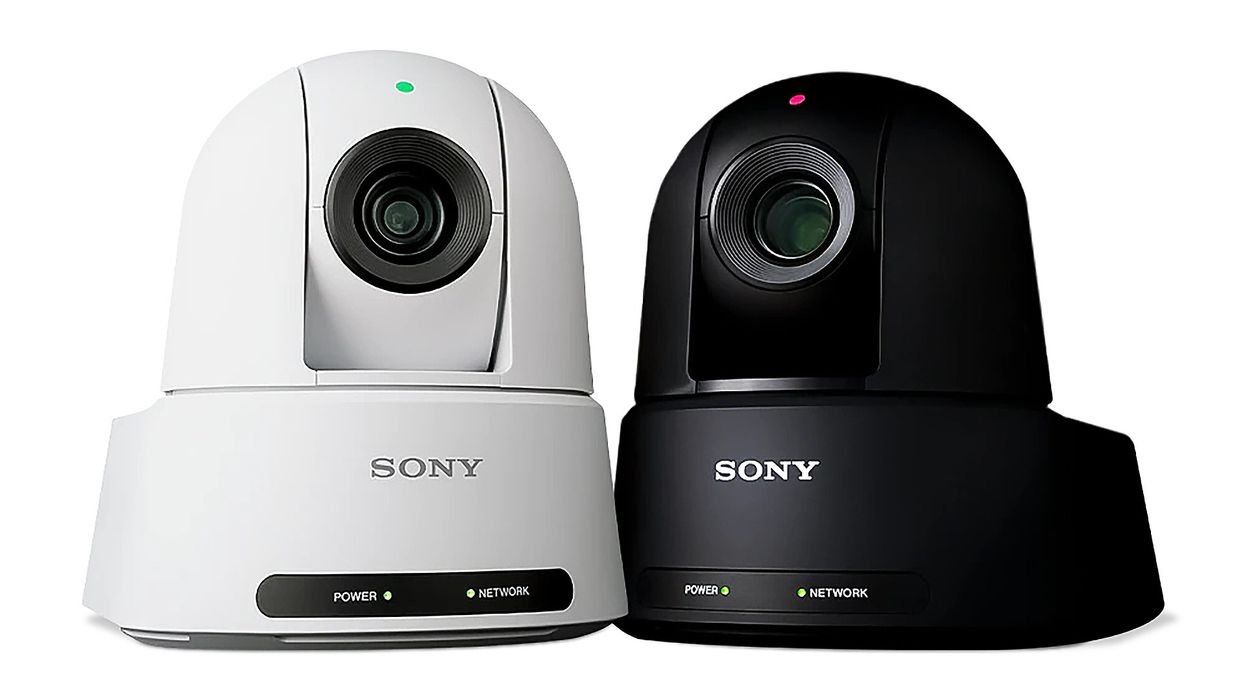The AI Composition Features of Sony's New PTZ Cameras May Change The Way You Frame
The new Sony SRG-A40 and SRG-A12 aren’t all that exciting to filmmakers, but the technology they offer has piqued our interest.

In a world where remote production and broadcast have become increasingly important, having reliable and efficient cameras is key. Sony has once again stepped up to the plate with their latest offerings—the Sony SRG-A40 and Sony SRG-A12 PTZ cameras.
But while cinematographers and filmmakers may not be too excited about these new tools, Sony has implemented some impressive AI technologies that are sure to change the filmmaking landscape. At least when they eventually trickle down to Sony’s cinema line.
PTZ Is A Broadcast Kind Of Thing
The Sony SRG-A40 and SRG-A12 are both compact and lightweight PTZ (pan-tilt-zoom) cameras with integrated lenses. They both feature a 1/2.5 type Exmor R CMOS sensor that offers high-quality imaging, and advanced color reproduction. The stark difference between the two lies in the lens, with the A40 featuring an impressive 30x zoom range over the 12x of the A12. In Tele Convert Mode, this is increased to 80x and 24x, respectively, all while offering smooth and precise movements to easily follow the action and capture every moment. For live sports applications, this is a dream.
The SRG-A40 and SRG-A12 both offer a variety of output options, including Ethernet, HDMI, and HD-SDI. For remote broadcasting, live streaming, or live productions, these tools can quickly become a critical part of your workflow.

One of the standout features of these cameras is their compatibility with Sony’s REA-C1000 remote controller. Directors in a booth or cinematographers on location can control multiple cameras from one central location, making it easier to manage and coordinate your shots, like a ball game or music concert, for example.
Another great feature of the SRG-A40 and SRG-A12 is their low-latency video streaming capabilities. With less than 1 second of latency, your video feed is always in sync with the audio, which is crucial for projects where every second counts.
But for cinema? These cameras don't have that many use cases unless you’re using the Sony FR7, which sacrifices some of the features of these new cameras for a full-frame sensor and a Sony E-mount.
So Why Should Filmmakers Care?
Here’s where things get interesting for narrative creatives.
Sony is implementing a built-in PTZ Auto Framing technology with AI analytics. This allows creatives to utilize what Sony is calling Multiple Auto Framing to automatically set up different angles for close-ups, waist-ups, or full-body compositions. This not only supports framing but also zoom tracking and autofocus.

When this technology eventually trickles down to Sony’s other cameras, specifically the cinema-focused FR7 PTZ camera, the speed at which creatives will be able to compose a shot will increase. This will make a set more efficient and, in turn, save you money, and we all know how important that is for production. If you think this tech is still years away, think again. We've already seen AI-supported autofocus implemented in the Sony a7R V.

While this will still be a niche toolset for filmmakers, it’s really interesting to see how automation will affect narrative creatives in the future. With AI taking over the artistic world (for better or for worse), how filmmakers will go about bringing their artistic endeavors to life will change. That's inevitable. How you change with it may be the difference between success and failure.
What do you think about AI-enhanced composition tools? Would this be something you’d like in your cameras? How would you use it in your projects? Let us know in the comments!
Check out weekly specials, deals, and rebates: Pro Video Gear, Pro Audio Gear, Lighting











